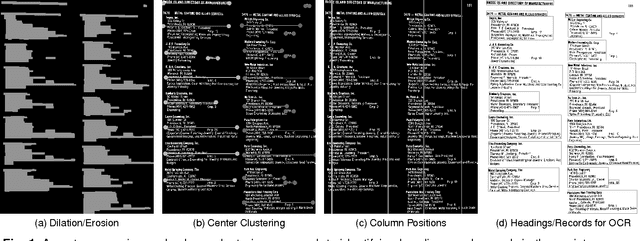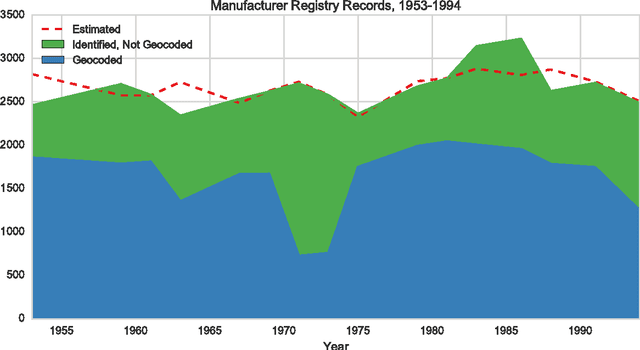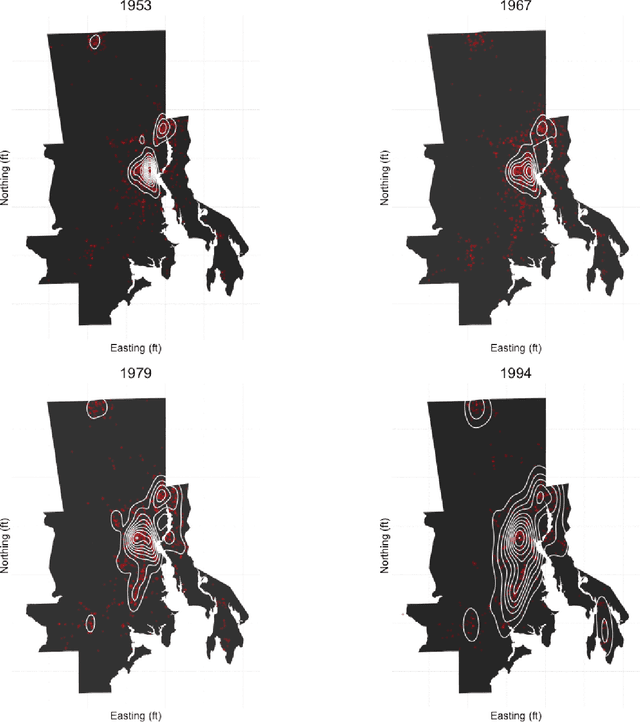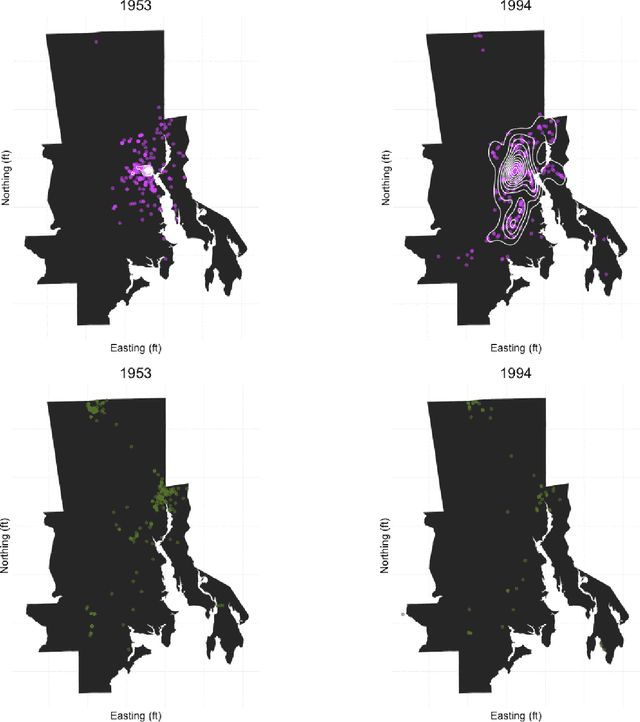Dwyer Deighan
Mixture of neural operator experts for learning boundary conditions and model selection
Feb 06, 2025Abstract:While Fourier-based neural operators are best suited to learning mappings between functions on periodic domains, several works have introduced techniques for incorporating non trivial boundary conditions. However, all previously introduced methods have restrictions that limit their applicability. In this work, we introduce an alternative approach to imposing boundary conditions inspired by volume penalization from numerical methods and Mixture of Experts (MoE) from machine learning. By introducing competing experts, the approach additionally allows for model selection. To demonstrate the method, we combine a spatially conditioned MoE with the Fourier based, Modal Operator Regression for Physics (MOR-Physics) neural operator and recover a nonlinear operator on a disk and quarter disk. Next, we extract a large eddy simulation (LES) model from direct numerical simulation of channel flow and show the domain decomposition provided by our approach. Finally, we train our LES model with Bayesian variational inference and obtain posterior predictive samples of flow far past the DNS simulation time horizon.
Physics Informed Machine Learning for Chemistry Tabulation
Nov 06, 2022Abstract:Modeling of turbulent combustion system requires modeling the underlying chemistry and the turbulent flow. Solving both systems simultaneously is computationally prohibitive. Instead, given the difference in scales at which the two sub-systems evolve, the two sub-systems are typically (re)solved separately. Popular approaches such as the Flamelet Generated Manifolds (FGM) use a two-step strategy where the governing reaction kinetics are pre-computed and mapped to a low-dimensional manifold, characterized by a few reaction progress variables (model reduction) and the manifold is then ``looked-up'' during the runtime to estimate the high-dimensional system state by the flow system. While existing works have focused on these two steps independently, in this work we show that joint learning of the progress variables and the look--up model, can yield more accurate results. We build on the base formulation and implementation ChemTab to include the dynamically generated Themochemical State Variables (Lower Dimensional Dynamic Source Terms). We discuss the challenges in the implementation of this deep neural network architecture and experimentally demonstrate it's superior performance.
ChemTab: A Physics Guided Chemistry Modeling Framework
Feb 20, 2022Abstract:Modeling of turbulent combustion system requires modeling the underlying chemistry and the turbulent flow. Solving both systems simultaneously is computationally prohibitive. Instead, given the difference in scales at which the two sub-systems evolve, the two sub-systems are typically (re)solved separately. Popular approaches such as the Flamelet Generated Manifolds (FGM) use a two-step strategy where the governing reaction kinetics are pre-computed and mapped to a low-dimensional manifold, characterized by a few reaction progress variables (model reduction) and the manifold is then "looked-up" during the run-time to estimate the high-dimensional system state by the flow system. While existing works have focused on these two steps independently, we show that joint learning of the progress variables and the look-up model, can yield more accurate results. We propose a deep neural network architecture, called ChemTab, customized for the joint learning task and experimentally demonstrate its superiority over existing state-of-the-art methods.
Mining Spatio-temporal Data on Industrialization from Historical Registries
Dec 03, 2016



Abstract:Despite the growing availability of big data in many fields, historical data on socioevironmental phenomena are often not available due to a lack of automated and scalable approaches for collecting, digitizing, and assembling them. We have developed a data-mining method for extracting tabulated, geocoded data from printed directories. While scanning and optical character recognition (OCR) can digitize printed text, these methods alone do not capture the structure of the underlying data. Our pipeline integrates both page layout analysis and OCR to extract tabular, geocoded data from structured text. We demonstrate the utility of this method by applying it to scanned manufacturing registries from Rhode Island that record 41 years of industrial land use. The resulting spatio-temporal data can be used for socioenvironmental analyses of industrialization at a resolution that was not previously possible. In particular, we find strong evidence for the dispersion of manufacturing from the urban core of Providence, the state's capital, along the Interstate 95 corridor to the north and south.
 Add to Chrome
Add to Chrome Add to Firefox
Add to Firefox Add to Edge
Add to Edge